I have taken a picture of the yard nearly every week since we started seeing plants pop up this spring. And, wow!, are they special to watch. I imagine it’s a tad bit like having kids, watching the new growth like a hawk, taking photos at every sign of something new learned or bloom showing, enjoying all their friends stopping by to visit.
I think it would be neat to share a timelapse in photo-form of the front yard, from March to this week in July. This is a result of roughly 250 plugs grown from seed by me last winter and put in the ground last fall, with some plants that grew from seeds produced by 2024 plants, direct sown into the yard. The majority of what you are seeing are the results of plugs, but a few (including ALL the sunflowers) are volunteer, having re-seeded themselves.
I like to sit out on the porch to attempt to do work, but because I’m easily distracted, the birds at the birdbath, continuous path of bees, and changing blooms nearly always interrupt my work. Oh well - it’s kind of nice to take it easy with work too and leave room for the pretty things in life.


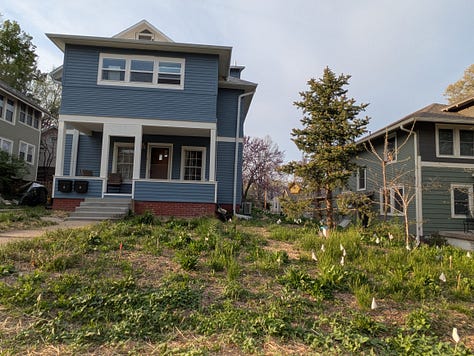

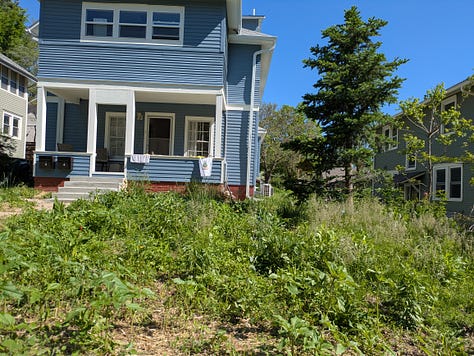
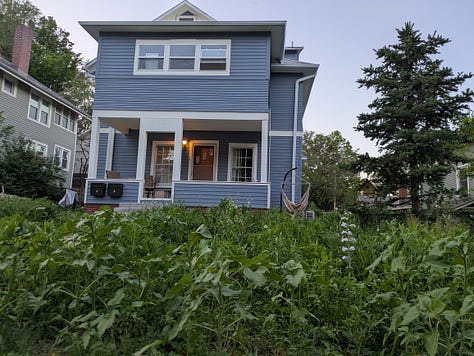
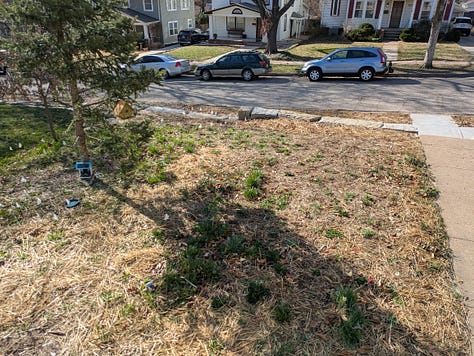

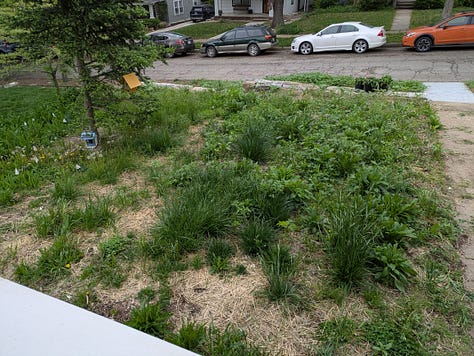

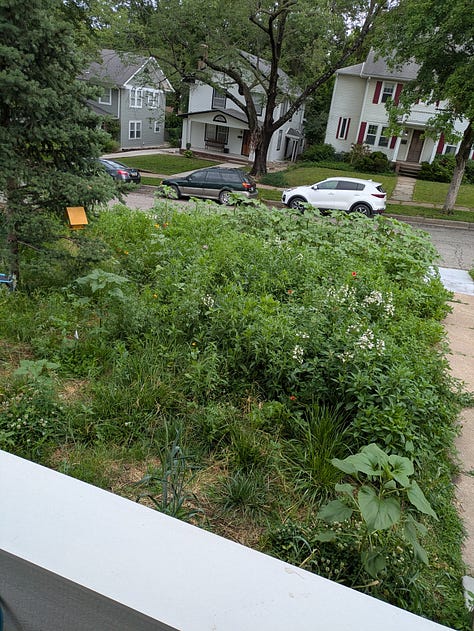

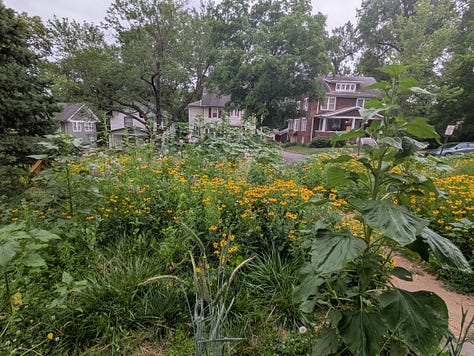





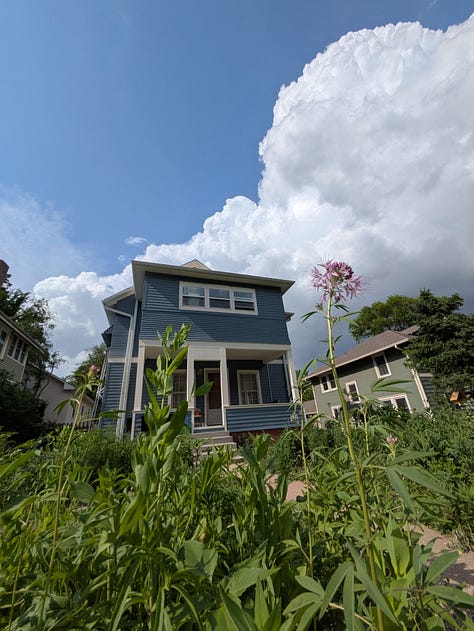
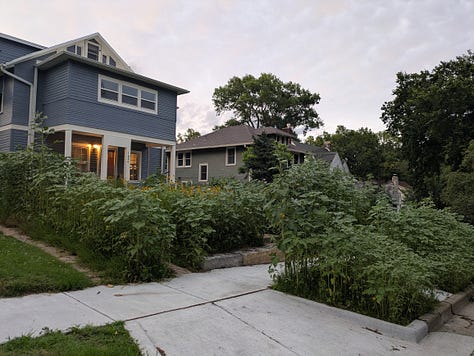
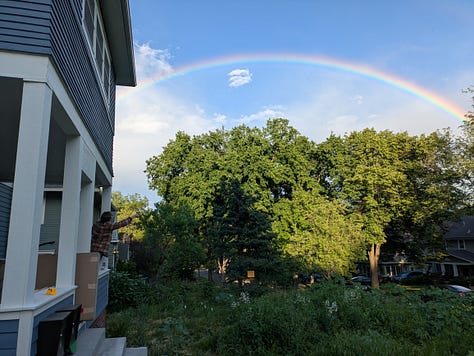
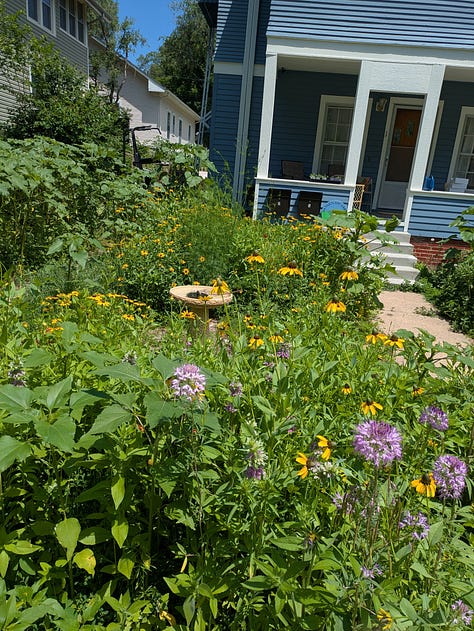
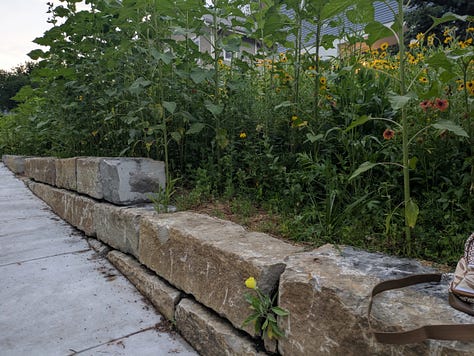

The first video is just from May 27th of this year, and the second is from June 30th! Amazing how quickly it changes!
Remember - this was not built in a day… it is the journey that continues to evolve. Adding a little here and there, selective weeding, and time spent watching all adds up!
Some helpful resources:
A Northeast KS website with resources designed to help primarily urban gardeners incorporate native plants! https://plantnativeks.weebly.com/
I like this excerpt, below, from this pdf: Kansas Native Cat Foods (“Cat” here, meaning… Caterpillar!!)
“The Secret to Success: Loving and Feeding Caterpillars
If all you offer are flowers, then you are merely a low-life nectar bar serving only adult beverages. Planting more flowers will not bring more species and numbers of butterflies. No, you must plant to feed the children, the caterpillars. Unlike adults that can sip nectar from many species of flowers, most species of butterfly caterpillars eat a very specific plant leaf. For instance, the only food a Zebra Swallowtail caterpillar can eat is Paw-Paw leaves. No Paw-Paws, no Zebras. You choose which butterflies are in your garden by planting the specific caterpillar foods. Pregnant female butterflies will find your host plants, lay their eggs and establish resident populations. Best of all, many native caterpillar food plants are also beautiful and meet the needs of both gardeners and caterpillars. The following [linked, above] page provides a list of native host plants matched to butterfly species.”
Those listed in the above document are native plants to the Northeast KS region, but many of them will be native for a long range across the US
To find out what is native in your area, get in touch with your state Native Plant Society or check out BONAP - The Biota of North America Program. You will need to know the latin genus and species to use the website, but it is a comprehensive resource for checking native/non-native/naturalized/invasive species! Their data is so well-done, that the link is actually county specific.

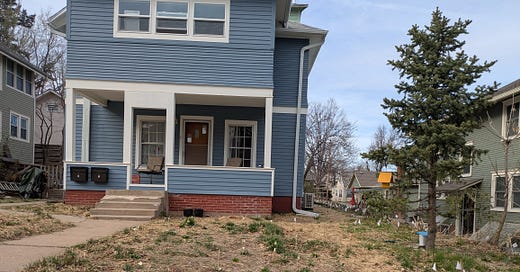


Looks SO good!! 👏👏👏